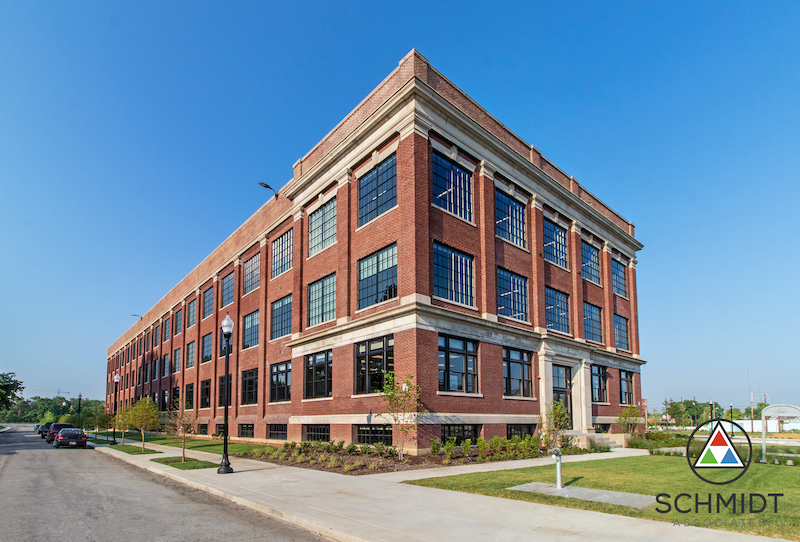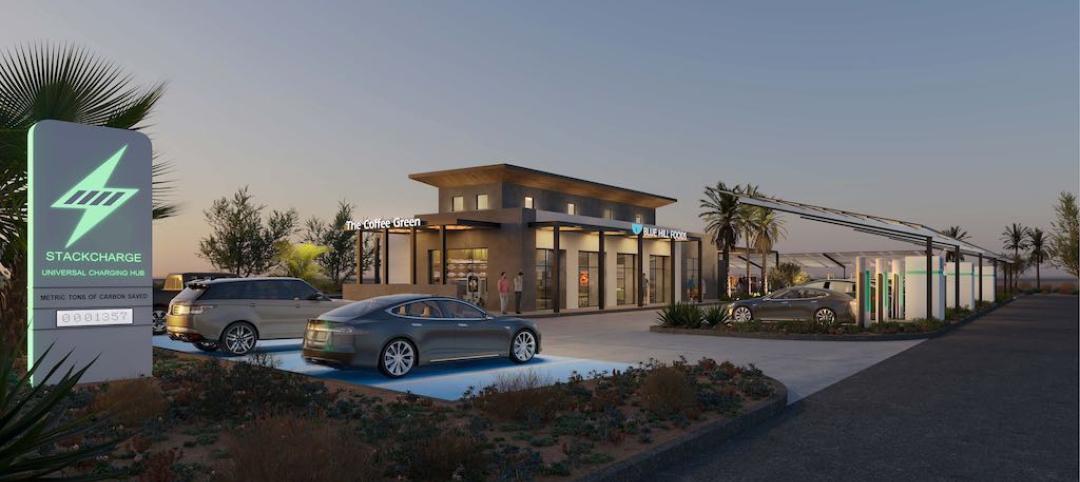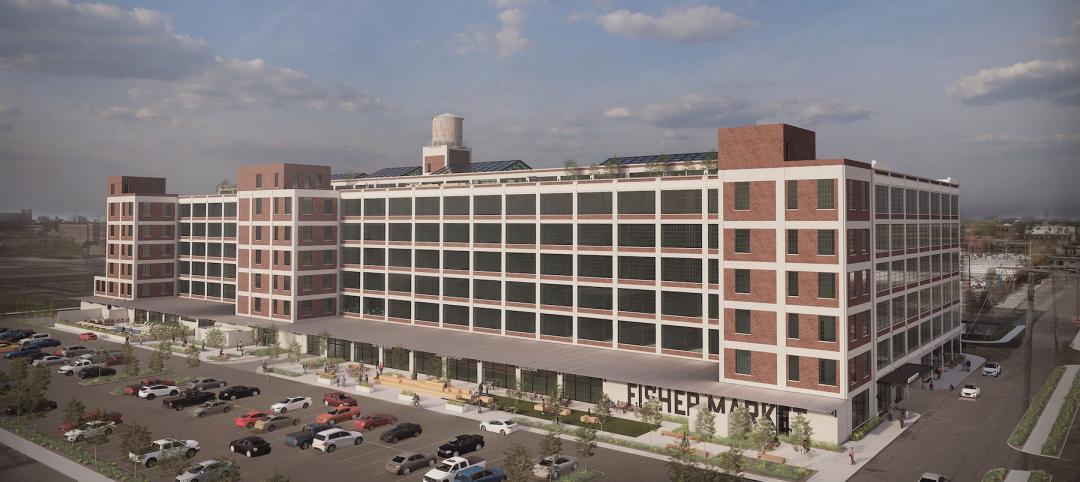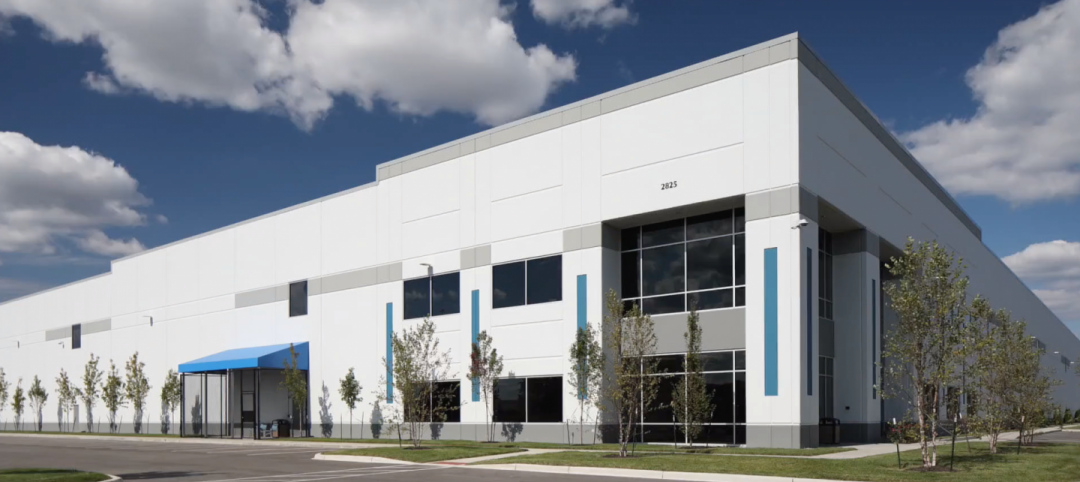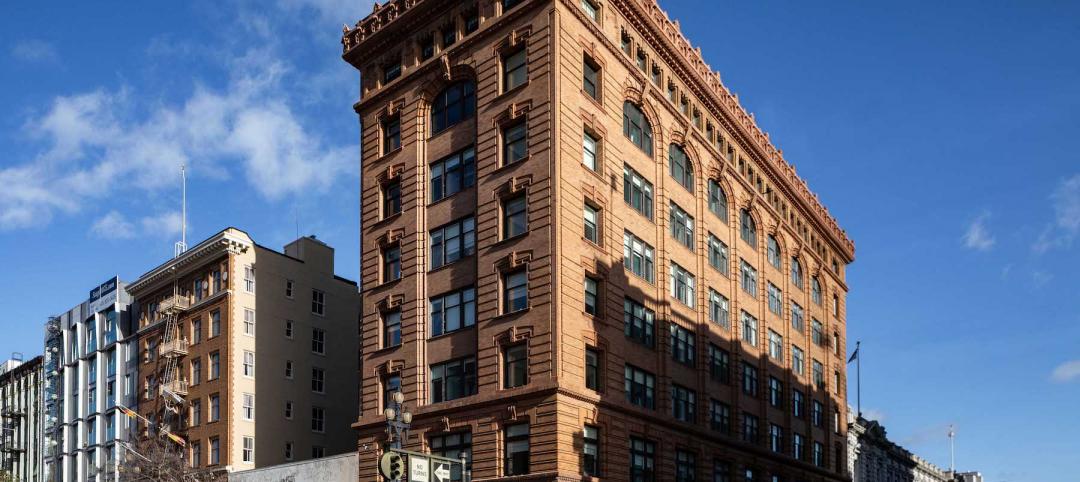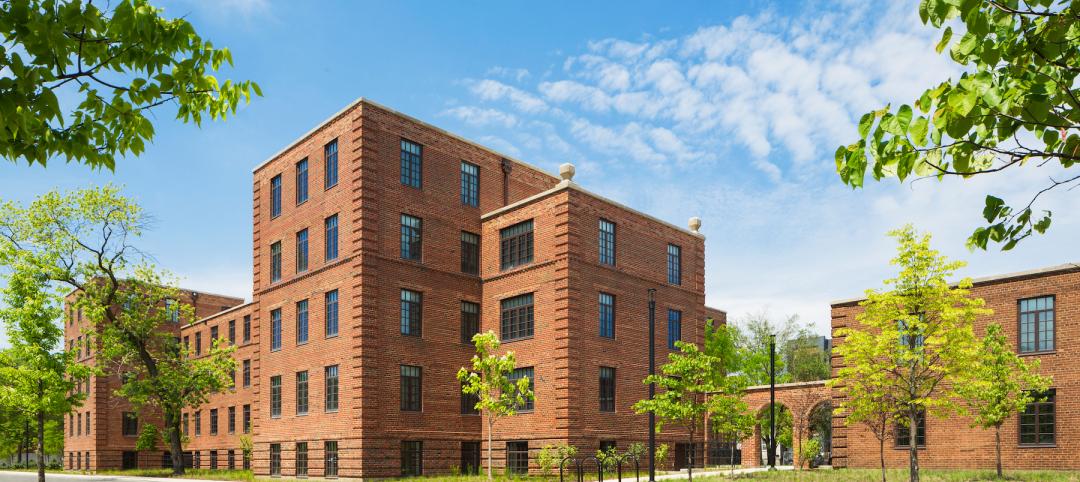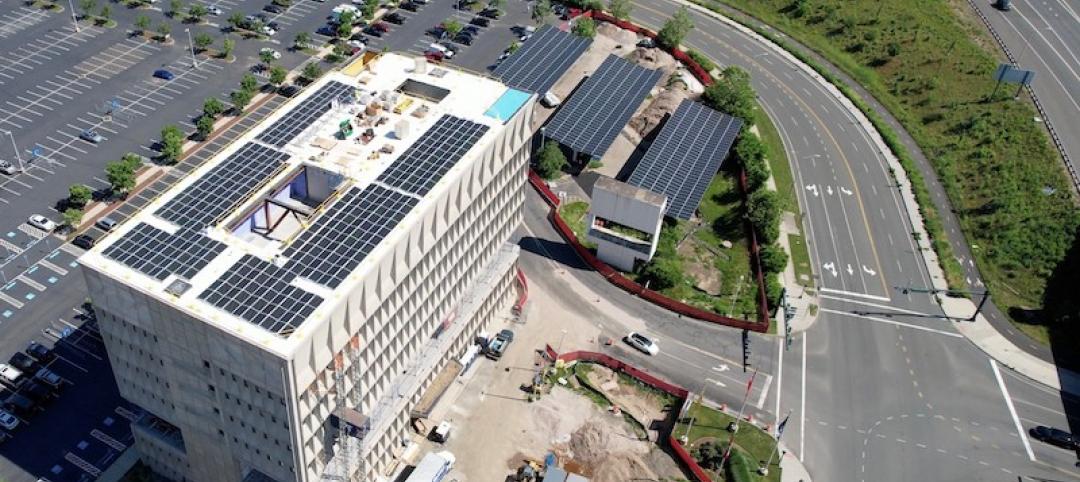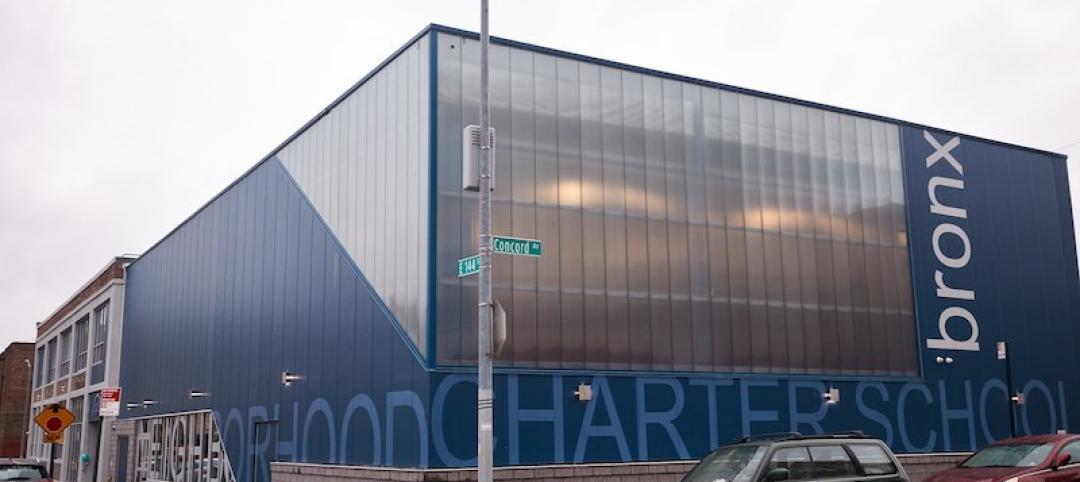The P.R. Mallory Building in Indianapolis was once where the Duracell battery was invented and patented. Vacant for decades, the 100-year-old building has been jolted back to life through an adaptive reuse project that converted the facility into new homes for the STEM-focused public charter school Purdue Polytechnic High School and Paramount Englewood Middle School.
The building team—AE firm Schmidt Associates, Brandt Construction, and landscape designer Anderson + Bohlander—was instrumental in helping Englewood Community Development and John Boner Neighborhood Centers, the building’s owners since 2018, to realize their vision.
“We were able to help the owners take something old and dilapidated, and turn it into something new and innovative that will improve lives long into the future,” says Lisa Gomperts, FAIA, LEED AP, Principal and Project Manager with Schmidt Associates.
REUSE DESIGN COMPLICATED BY NATIONAL REGISTRY

A before-and-after look at one of the building's areas. Large floor plates gave the design team lots of room for their ideas.
Adaptive reuse and historic preservation are among Schmidt’s specialties. For example, last year the firm converted an abandoned 62,000-sf strip mall in Shelbyville, Ind., into Golden Bear Preschool, a $13 million project that encompasses a SENSES gym for children with special needs, 15 classrooms, a cafeteria, and outdoor play area. The school’s administrative office is located inside what had been a bank at the end of the shopping center.
The Indianapolis schools, which opened last week, are contained within 114,256 sf over four floors. The project’s total cost was $38 million, of which $23.4 million was construction.
Click here to see an architectural tour of the building
The adaptive reuse presented some challenges. During the design phase, the owners initiated the process of putting the building on the National Register of Historic Places, which meant that any proposed designs needed approval from the National Parks Service, the Indiana Department of Natural Resources, and the city.
It took 23 months to get the building’s 206 historically accurate windows approved. The building itself also had an undocumented tunnel system that had to be filled in. And because that had once been a battery plant, environmental remediation was a given to make the space safe for students and faculty.
The building’s original wood columns and ceilings were stripped and restored, and other original elements were retained such as a catwalk and roof monitors, steel doors of the elevator and vaults, and the factory’s smokestack for future renovation. The original terrazzo tile that adorned the building’s north entryway was restored.
Also see: Hastings Architecture creates its new HQ from a former Nashville public library building
ARCHITECT HAD LOTS OF SPACE TO WORK WITH
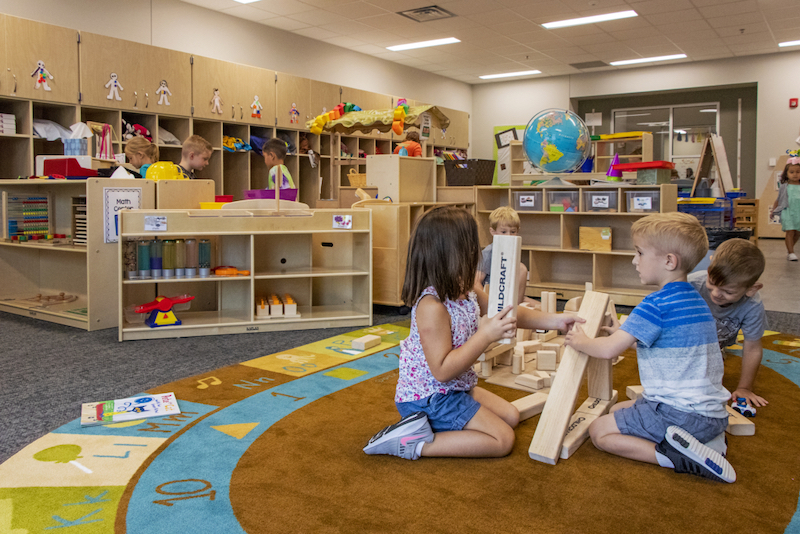
Another of Schmidt Associates' adaptive reuse projects is Golden Bear Preschool, inside what once was a shopping mall in Shelbyville, Ind.
The nontraditional curricula of the educational tenants, and their relationship, drove the reuse design. The two institutions will be integrated with each other and Purdue University; for example, a middle-school student would receive priority admittance to Purdue Polytechnic, whose students receive direct admittance upon graduation to Purdue University.
The building has 56 classrooms: 31 for the high school including labs and a career readiness center; and 25 for the middle school.
The building’s expansive floor plates gave Schmidt an ample canvas for its design ideas. The building now features collaborative study lounges whose furniture can be broken down into pods; clean and dirty maker spaces; flexible classrooms with garage doors that open up or section off spaces as needed; and communal outdoor gathering areas. There is also a high level of technological integration between the schools.
Related Stories
Urban Planning | Jul 19, 2022
The EV charger station market is appealing to investors and developers, large and small
The latest entry, The StackCharge, is designed to make recharging time seem shorter.
Adaptive Reuse | May 18, 2022
An auto plant in Detroit to get a retread as mixed-use housing
Fisher 21 Lofts could be the largest minority-led redevelopment in the city’s history.
Industrial Facilities | Apr 1, 2022
Robust demand strains industrial space supply
JLL’s latest report finds a shift toward much larger buildings nearer urban centers, which fetch higher rents.
Healthcare Facilities | Mar 25, 2022
Health group converts bank building to drive-thru clinic
Edward-Elmhurst Health and JTS Architects had to get creative when turning an American Chartered Bank into a drive-thru clinic for outpatient testing and vaccinations.
Adaptive Reuse | Dec 16, 2021
An adaptive reuse of a historic building in San Francisco was worth the wait
A five-year-long project included extensive restoration.
Adaptive Reuse | Nov 1, 2021
CallisonRTKL explores converting decommissioned cruise ships for housing
The rapid increase in cruise ship decommissioning during the last 18 months has created a unique opportunity to innovate and adapt these large ships.
Multifamily Housing | Oct 21, 2021
Chicago’s historic Lathrop public housing complex gets new life as mixed-income community
A revitalized New Deal–era public housing community in Chicago brings the Garden City movement of yesteryear into the 21st century.
Adaptive Reuse | Aug 25, 2021
The first net-zero hotel in the U.S. is nearing completion in Connecticut
Solar arrays will provide the electricity for the Hotel Marcel, whose name recalls the building’s original designer.
Adaptive Reuse | Aug 13, 2021
Developers are repositioning vacant space as charter schools
Transwestern is working with the National Alliance of Public Charter Schools to provide a turnkey solution.
Hotel Facilities | Jun 18, 2021
Adaptive reuse for hospitality, with Frank Cretella of Landmark Developers
In an exclusive interview for HorizonTV, Landmark Developers' President Frank Cretella talks about the firm's adaptive reuse projects for the hospitality sector. Cretella outlines his company's keys to success in hospitality development, including finding unique properties and creating memorable spaces.


